- About MAA
- Membership
- MAA Publications
- Periodicals
- Blogs
- MAA Book Series
- MAA Press (an imprint of the AMS)
- MAA Notes
- MAA Reviews
- Mathematical Communication
- Information for Libraries
- Author Resources
- Advertise with MAA
- Meetings
- Competitions
- Programs
- Communities
- MAA Sections
- SIGMAA
- MAA Connect
- Students
- MAA Awards
- Awards Booklets
- Writing Awards
- Teaching Awards
- Service Awards
- Research Awards
- Lecture Awards
- Putnam Competition Individual and Team Winners
- D. E. Shaw Group AMC 8 Awards & Certificates
- Maryam Mirzakhani AMC 10 A Awards & Certificates
- Two Sigma AMC 10 B Awards & Certificates
- Jane Street AMC 12 A Awards & Certificates
- Akamai AMC 12 B Awards & Certificates
- High School Teachers
- News
You are here
Mathematical Treasure: Collected Works of John Wallis, including Treatise of Algebra
The Collected Works of John Wallis (1616-1703) were published from 1693 to 1699.
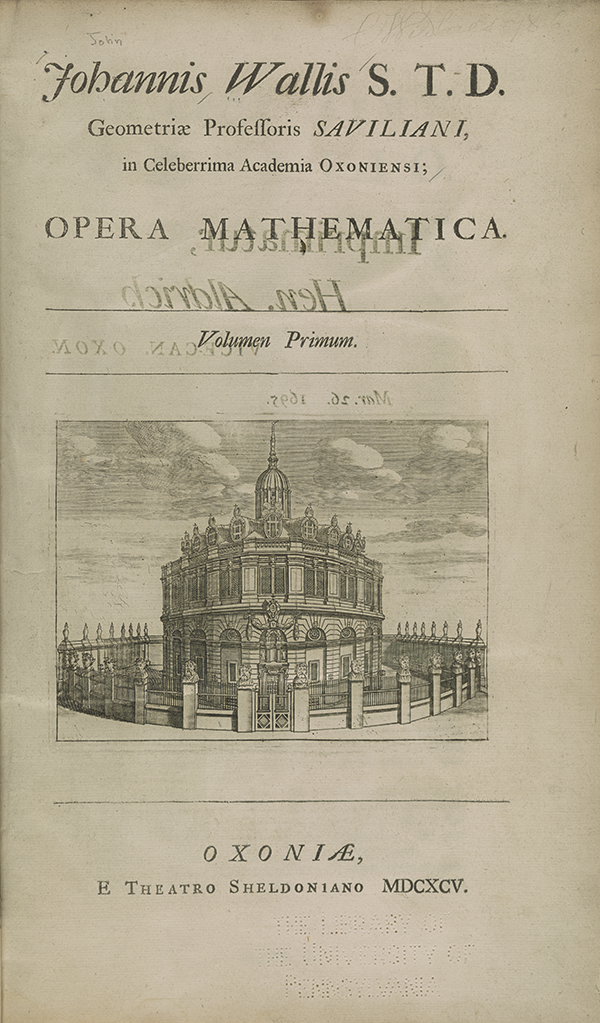
The frontispiece for this Collection was a portrait of Wallis.
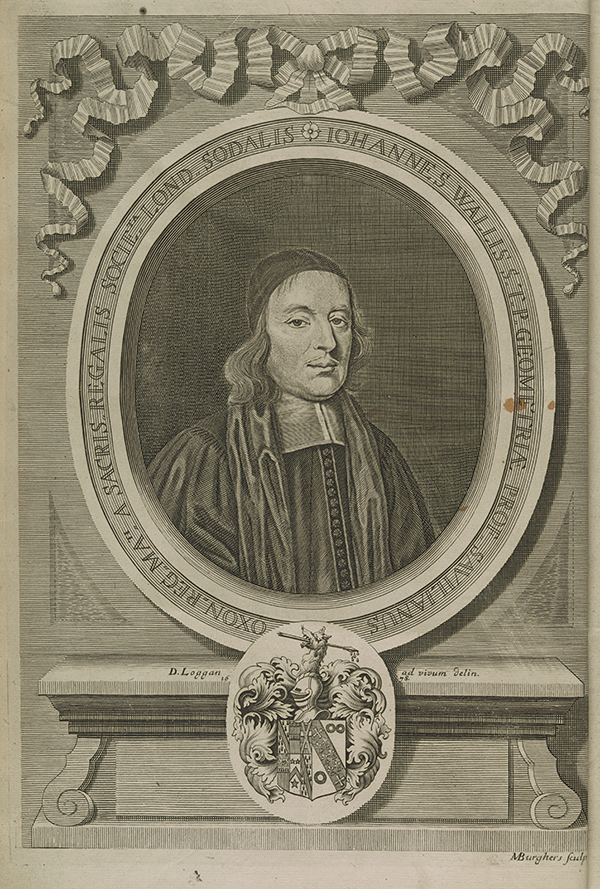
Within this Collection is a complete copy of Wallis’s Algebra, first published in 1685.
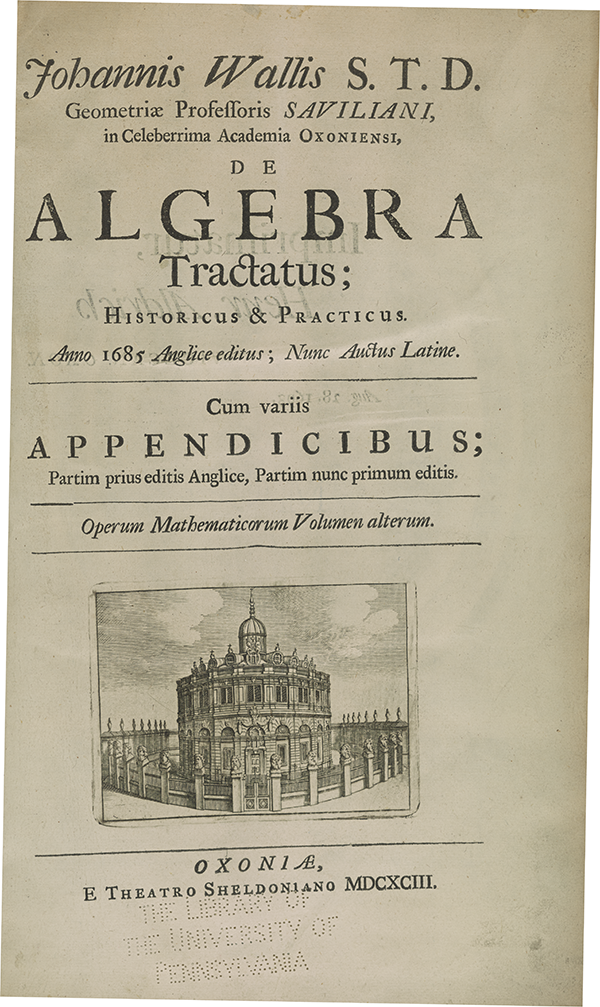
The frontispiece for the Algebra is also a portrait of the author but in a more formal pose.
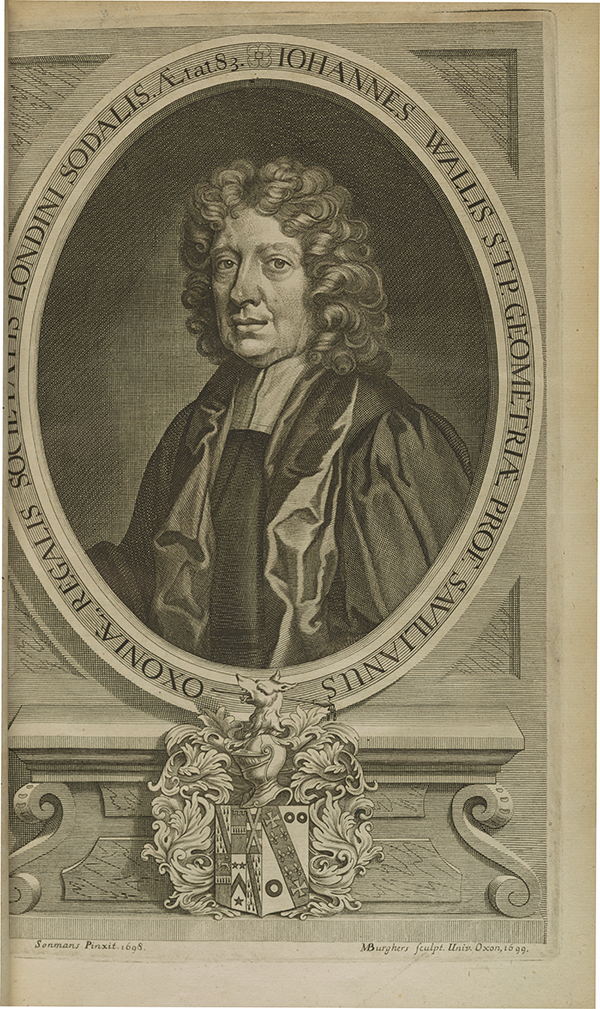
On page 105 of his Algebra, Wallis gave a table explaining his algebraic notation, where: quadratum, symbolized by “q”, indicates ‘raised to the second power’ and cubus, “c”, means ‘raised to the third power’. Thus, for a modern reader: \({\rm{Xq}}=x^2,\) \({\rm{Xc}}=x^3,\) \({\rm{Xqq}}=x^4,\) \({\rm{Xqc}}=x^5\dots.\)
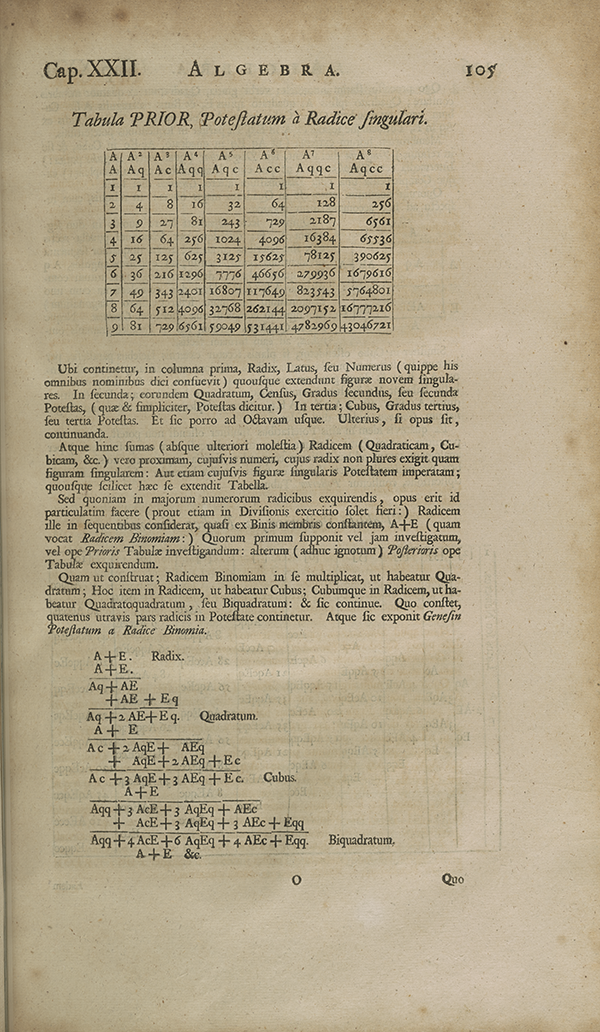
Wallis’s concern for the cycloid is contained in a contribution beginning on page 499 of the Collection.
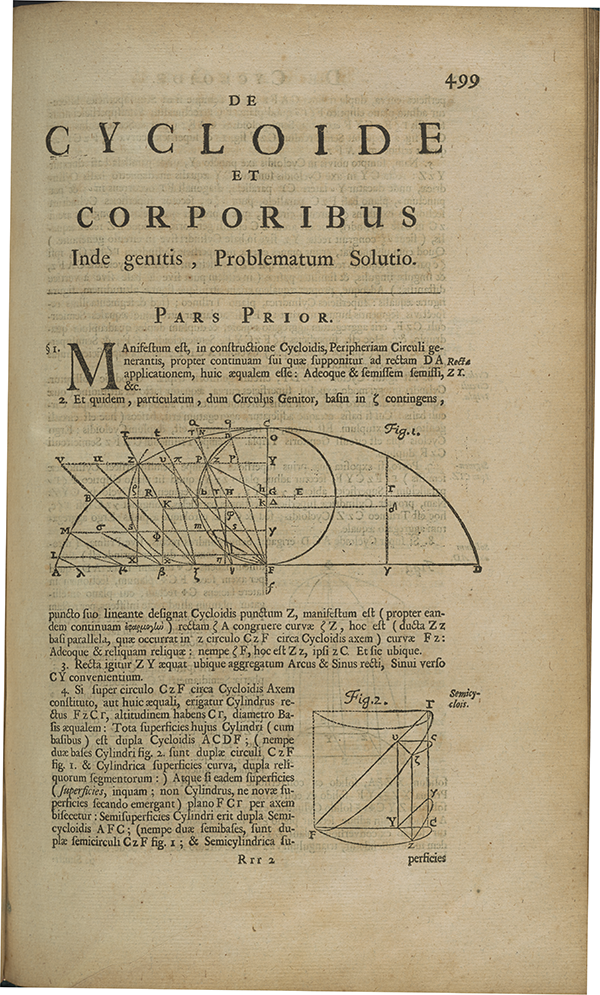
The images above are presented courtesy of the University of Pennsylvania Libraries.
Frank J. Swetz (The Pennsylvania State University), "Mathematical Treasure: Collected Works of John Wallis, including Treatise of Algebra," Convergence (October 2016)




